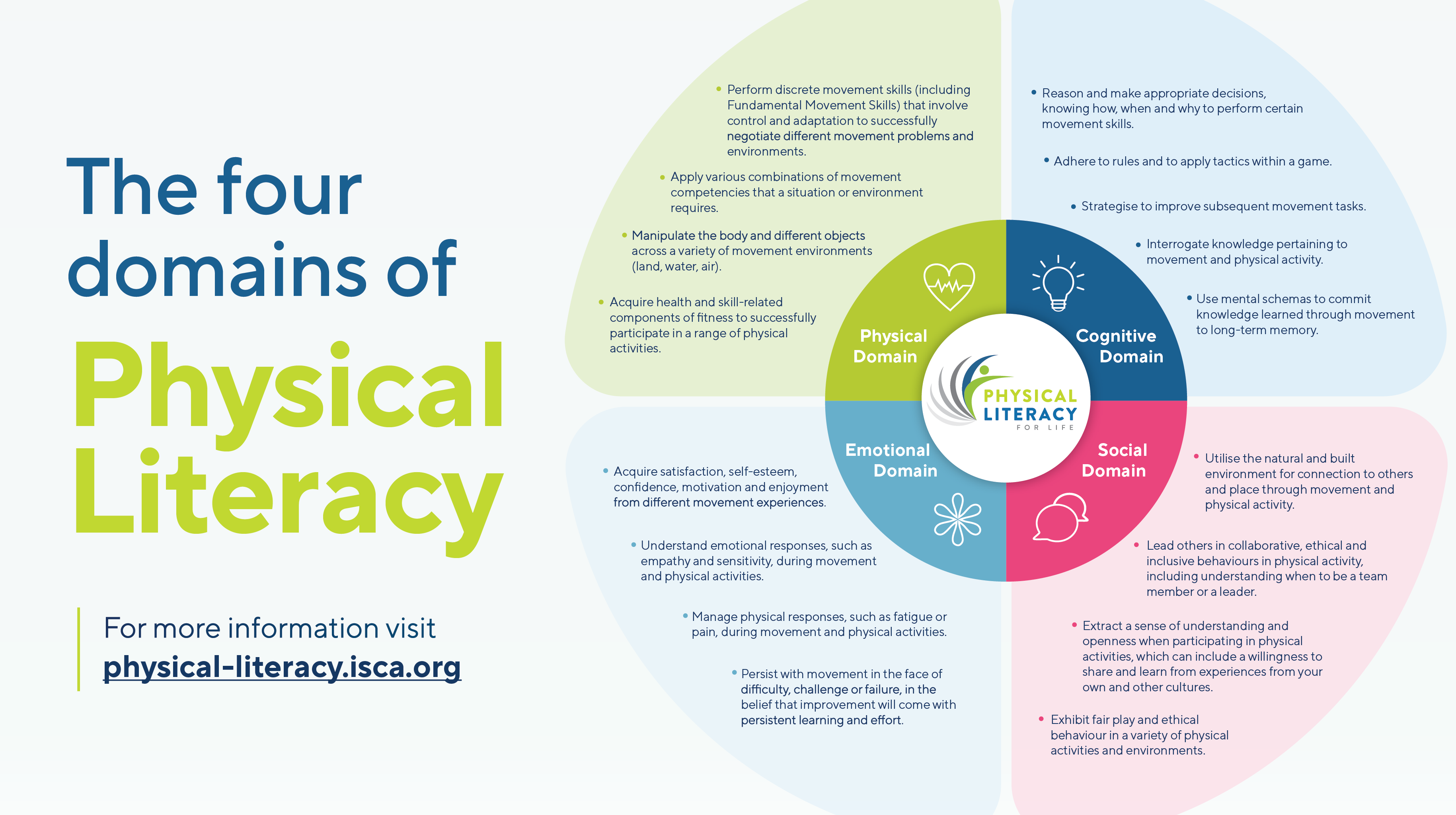Topic 1: UNDERSTAND – the reason for
Quick overview from an expert
In this video, 
Actionable learnings from data or existing studies: the 4 domains of Physical Literacy
Physical literacy is often seen as the gateway to lifelong physical activity practice and a foundation for how we move, and it can help all generations lead active, healthy and fulfilling lifestyles. It is a concept that is applicable and useful for both schools and sports clubs. And as such it is worth knowing for among all who work with children and youth.
The illustration below showcases not only the interrelated domains of physical literacy (PL), but also the tangible skills and attributes acquired through PL.
In light of these benefits, it is understandable that physical literacy is correlated with several health indicators such as:
🔹 Motor competencies
🔹 (Un)healthy weight
🔹 Various markers of physical fitness (cardiorespiratory fitness, muscular strength, endurance )
🔹 Motor competence, motivation and positive affect work seen in an integrative manner to produce differences in PA and subsequent health outcomes in children. Health-related fitness – examine mental and physical health outcomes such as depression, anxiety, or diabetes This approach is integrative to produce differences in PA and subsequent health outcomes in children.’
Source: “Physical Literacy, Physical Activity and Health: Toward an Evidence Informed Conceptual Model” an article by John Cairney, Dean Dudley, Matthew Kwan, Rheanna Bulten, Dean Kriellaars.

